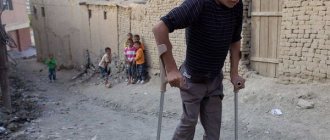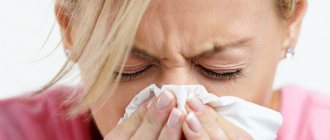Additional vaccination against polio in questions from parents and answers from Dr. Komarovsky
Poliomyelitis is a viral infection (viral means there are no drugs that can kill the pathogen). It is transmitted through the mouth: by water, that is, as a disease of dirty hands. The only effective method of prevention is vaccination.
Read about polio and polio vaccines here (small document).
***
To understand further text, here is some brief information about vaccines.
OPV (oral polio vaccine) is a vaccine containing a live, attenuated polio virus. Dripping into the mouth - 2 drops on the tongue.
IPV is a polio vaccine containing inactivated (killed) polio virus. It is administered by injection (injection). IPV may be included in combination vaccines, such as Infanrix and Pentaxim.
Questions and answers
My child is vaccinated according to the calendar (in whole or in part). Should I agree to additional polio vaccination? If yes, then why is it needed?
Active circulation of polio viruses has been confirmed in Ukraine. It (this circulation) can be interrupted by simultaneous mass vaccination of children with OPV, which is carried out in several rounds.
Children who are correctly vaccinated according to the calendar using IPV have virtually no risk of getting sick, but can be carriers (and spreaders) of the virus, since IPV (unlike OPV) does not form local immunity in the intestines.
That is why additional OPV vaccination is recommended for such children. The purpose of additional polio vaccination is not so much to protect a given child, but to stop the circulation of the virus in the country.
It is fundamentally important that for children initially vaccinated with IPV, subsequent OPV vaccination is absolutely safe.
My child is not vaccinated at all. Can he receive polio drops?
If the child is more than 2 months old and has never been vaccinated against polio, vaccination should begin with IPV.
OPV is administered no earlier than 2 weeks after IPV.
I know that the vaccine was thawed and then frozen again. What does it mean? Is it dangerous?
For those vaccinated, it means nothing and poses no danger. WHO, the vaccine manufacturer and the Ministry of Health have confirmed that repeated freezing of the vaccine does not affect its effectiveness and safety. Some journalists, some businessmen close to the Ministry of Health who have lost the opportunity to make money by purchasing a vaccine, and all professional opponents of vaccinations do not agree with this, so you have the opportunity to read about this regularly.
Can I determine if the vaccine was stored incorrectly?
WHO experts and the vaccine manufacturer officially advise that OPV is heat sensitive, so its quality must be carefully monitored using temperature indicators.
Parents have the opportunity to personally verify the suitability or unsuitability of the vaccine.
All bottles are equipped with a thermal indicator (usually located on the label). The thermal indicator is a square located inside a circle. If the bottle is exposed to excessive heat, the square will darken. You can only use bottles where the inner square is lighter than the outer circle.
Is the polio vaccine dangerous for a child?
Both OPV and IPV are among the safest vaccines. The only serious complication of OPV is the so-called vaccine-associated polio (VAP). The vaccine is live, so some unvaccinated children (on average 1 in 3 million) may develop the disease after vaccination. It is in order to avoid VAP that vaccination begins with IPV - the inactivated vaccine creates immunity sufficient to prevent VAP.
In other words:
- IPV is not dangerous in principle;
- OPV is dangerous to the unvaccinated;
- OPV is not dangerous for those previously vaccinated with IPV.
Is a child vaccinated with a live polio vaccine dangerous to others?
A child vaccinated with OPV releases live virus into the environment for some time, i.e., it is a source of infection. For those fully or partially vaccinated against polio, there is no risk. For those who are not vaccinated at all, theoretically there is a risk of the disease, and it is 1 case per 7–14 million vaccinations. However, even this risk can be reduced by observing basic rules of personal hygiene (reminder: polio is a disease of dirty hands).
Taking into account the extremely low probability of developing VAP in contacts, there is no need for any isolation, bans or quarantines, and such measures are not taken in any country in the world.
***
In conclusion, a few words about my attitude to the “document” of an anonymous group of authors who are hiding under the guise of the “Civil Rights Defense League.”
The main thing in my opinion is my enormous disappointment due to the fact that many people are seriously considering and actively disseminating this anonymous verbiage, built on incomplete, unreliable and deliberately false information and, moreover, created by an organization that is professionally engaged in anti-vaccination activities.
We also recommend listening.
author Komarovsky E.O. published 26/10/2015 13:22 updated 31/01/2018
Are vaccinated children contagious?
Cases of infection of unvaccinated children from vaccinated children are few and are associated with the use of OPV. Most often, the disease proceeds smoothly, without damage to the central nervous system. The mild form of the pathology is due to the low viral shedding of babies, which does not allow the disease to develop to its full potential. To completely eliminate the possibility of spreading viruses, IPV is used.
When answering the question of how long a vaccinated child is contagious to other people, they indicate that the poliovirus stays in the body for about 2 months. In order to avoid becoming infected with polio, it is necessary to exclude any contact between unvaccinated children and vaccinated children for this period.
You should not contact newly vaccinated children in the following cases:
- immunodeficiency;
- pregnancy;
- chemotherapy.
It is possible for a child vaccinated with OPV to become infected with polio, but this is extremely rare. It must be remembered that by avoiding contact with such children, it is impossible to completely eliminate the possibility of poliovirus entering the body of an unvaccinated person. Only universal vaccination of the population is a 100% guarantee of protection against polio.
Infectious diseases of a viral nature have become a real curse of humanity, along with diseases caused by bacteria. Every year, thousands of people around the world die or suffer irreparable damage to their health as a result of infection with various viruses.
Fortunately, man has learned to fight and even overcome some of them with the help of medicine. Some of the infectious diseases were defeated forever by the efforts of researchers, doctors and pharmacists. But even today they can remind themselves with outbreaks of spread. Such diseases include polio.
Is a child contagious after a polio vaccination and during what period does infection occur? Is it necessary to limit children’s contacts with other (unvaccinated) children after vaccination? Which one is better to choose: live (in drops) or in injections? We'll figure out!
- What kind of disease is this
- Contacts after vaccination
- Precautionary measures
Precautionary measures
The oral vaccine would not have become so widespread if the risk of severe infection was high. Don't panic: the likelihood of post-vaccination complications is extremely low. But since it exists, precautions should be taken.
The fight against cancer greatly reduces immunity; such people are at risk.
If all family members are healthy , then there are three simple rules for childhood vaccinations:
- Follow hygiene rules more carefully than usual - wash your hands more often, eat from isolated dishes, do not share items such as towels, toothbrushes or toys.
If there are several children in a family, they all need to be vaccinated at once: this way the risk practically disappears.
After the injection, refrain from visiting institutions such as kindergartens and crowded places in general, because the child is a potential carrier of the infection.
The chance is very small, and if simple recommendations are followed, it tends to zero.
In the garden, 10 days ago, a group was vaccinated against polio with a live vaccine, today we came to the group for the first day after the illness, and I found out that one boy was vaccinated only in the evening, my son is not vaccinated, we have a medical exemption, you know The nurse did not tell us that they are vaccinated against polio and that an unvaccinated child should not communicate with a vaccinated child, as he could become infected. Naturally, now we won’t go to the garden for 2 months, but could my son become infected in one day? Has anyone had a similar situation?
Author, don’t worry, don’t get infected.
This vaccination still doesn’t give anything, it doesn’t save me. I had one, but I still got polio, and now I have cerebral palsy. I can walk, though, not in a wheelchair, and that’s good.
I’m not a doctor, but I remember that I read in a book that the feces of a vaccinated child are dangerous, that is, the mother needs to carefully change the small child’s diaper for three days, wash her hands well after that, something like that. I hope the doctors here can give me some advice.
Theoretically, you can become infected if you have a weakened immune system. But, author, will you keep your child under a glass bell all his life? It may be worth considering IPV vaccination. As a matter of principle, I didn’t give OPV to my family, because I think that IPV is more effective and safer. What is your reason for recusal?
I’m not a doctor, but I remember that I read in a book that the feces of a vaccinated child are dangerous, that is, the mother needs to carefully change the small child’s diaper for three days, wash her hands well after that, something like that. I hope the doctors here can give me some advice.
what nonsense? How can the author come into contact with the feces of a vaccinated child? these are strangers' children in kindergarten and obviously no longer wearing diapers, did you write something in your mind?
Polysorb for newborns
How many children do you have ?
Chess lessons
Little children's sleep
How many children do you have ?
The eldest daughter went crazy
I'm unhappy with my parents' gifts
Are live vaccine drops dangerous?
So, to combat polio, 2 types of drugs have been created and are still used to this day.
This is an inactivated vaccine containing “killed” poliovirus, administered intramuscularly (also known as IPV). And an oral vaccine consisting of live attenuated viruses (known as OPV) that is dropped into the mouth. It includes strains grown in such a way that their neurovirulence (pathogenicity) is significantly reduced, that is, they are not capable of causing disease.
Once inside, OPV completely imitates the normal entry of pathogen cells into the body. It protects the gastrointestinal tract from infection, preventing viral replication, and therefore the release of pathogenic microorganisms in feces.
But OPV also has a disadvantage - viruses can regain their neurovirulent qualities (for example, if a child suffers from immunodeficiency or pathology of the digestive system), which can cause vaccine-associated paralytic poliomyelitis (VAPP) to develop. And this already threatens an unvaccinated person with infection upon contact with a sick person.
Today, many countries around the world have abandoned the live polio vaccine, where the disease has been completely eradicated. But the Russian Federation is not yet one of them; we still use OPV, although gradually reducing its use.
Prevention and treatment of polio
Patients with polio require mandatory hospitalization. It is simply impossible to treat such a serious illness on an outpatient basis. Patients are isolated and are under constant medical supervision, since the risks are very high. Even a favorable course of the disease causes disability in people, and complications often lead to death.
Among the complications of polio are the following: pulmonary atelectasis, interstitial myocarditis, severe gastrointestinal disorders with bleeding and ulcers, paralysis of the entire body with complete immobilization. Only timely vaccination can protect against polio.
Why is polio dangerous?
Poliomyelitis is also called “ infantile spinal paralysis.”
”, since polio mainly affects children under 6 years of age.
Polio is highly contagious. The disease is provoked by a polyvirus
, which can be transmitted both by
airborne droplets
and
by household contact
. You can become infected with polio through contact with a sick person or through contaminated food, water and objects.
Polyvirus can be very tenacious. If there is no suitable “carrier” nearby, the virus easily adapts to the environment and can remain active for six months
, it is not afraid of drying or freezing, so it can live in almost any climate.
A person who has become infected with polio can survive the disease without visible symptoms, but throughout this time he will be dangerous to others. Regardless of the presence of symptoms, a sick person is a carrier and distributor of the infection. The main danger of polio is that it affects the membrane of the spinal cord
, and with it
motor nerve cells
, which leads to their death. Poliomyelitis can cause paralysis of certain muscle groups and lead to their atrophy, as a result of which a person becomes disabled.
Should we be afraid of the “live” vaccine?
Some parents are afraid to vaccinate their child with a live vaccine because they believe that it can provoke the development of a real disease
, however, the fears are unfounded.
In some cases, complications may indeed occur after administration of the vaccine, but these are usually local allergic reactions that have nothing to do with polio. In addition, the first two vaccinations for a child are given using an inactivated vaccine
, this allows one to develop immunity from the strains of the virus that are in the live vaccine and avoid complications. After the first two vaccinations, the live vaccine can be used without risk.
This vaccination scheme is not new or experimental; it has been successfully used in different countries for many years. WHO also noted its effectiveness. However, in some cases, doctors still refuse to use a live vaccine. This happens when we are talking about babies with HIV infection or children who were born to HIV-infected parents. Also, children with primary immunodeficiency are not vaccinated with a live vaccine.
What kind of disease is this
Poliomyelitis is an acute infectious disease caused by the poliovirus hominis virus, which belongs to the group of enteroviruses, that is, intestinal viruses.
The disease is characterized by high contagiousness, that is, there is a high probability of infecting a random person with the disease.
The gray matter in the spinal cord is affected, leading to depression of the central nervous system and muscle paralysis.
At risk are children aged six months to seven years - they are the ones most likely to develop pathologies, but older people can also get sick.
Future US President Franklin Roosevelt suffered from polio at the age of thirty-nine!
A child of kindergarten age is prone to violating the rules of cleanliness, and in countries with a low level of sanitary culture, morbidity rates have always been higher.
Parents should be wary if they observe the following symptoms:
- temperature up to 39-40 °C;
headaches and muscle pain;
indigestion: nausea, vomiting, abnormal bowel movements, loss of appetite.
The incubation period lasts from three days to a month , usually about ten days - during this period the virus spreads throughout the body.
Forms of poliomyelitis depending on the nature of pathogenesis:
- Spinal – the upper parts of the spinal cord are affected, up to the lumbar.
Bulbar - effects on the nuclei of the cranial nerves inside the spinal cord trunk.
Pontine - the nucleus of the facial nerve is affected.
Mixed forms, as derivatives of those listed.
Contacts after vaccination
To combat polio, different types of vaccines were developed and introduced by different scientists at different times.
Without going into medical details, they are divided into two main types:
- Culture-killed virus (IPV) – administered by injection, intramuscular or subcutaneous injection.
Live but weakened culture (OPV) is administered orally and has the appearance of a well-known pinkish liquid with a specific taste.
Is it possible to get polio from a vaccinated child?
Each vaccine has its own pros and cons.
The one that a person receives through a syringe injection is safer, because it is dead.
But the OPV vaccine produces more lasting immunity , even at the cellular level, since it is administered through the digestive tract, as a real virus would do.
And although the probability of illness from a living culture is very small, it still exists.
Therefore, in countries with Western European medical traditions, including the USA, living culture is used less and less, although it shows better results.
With an IPV vaccination, a child cannot infect anyone; the process of producing antibodies occurs only inside the body.
“Live” polio, introduced into the body, remains viable for up to two months.
This means that there is a possibility that a vaccinated child who has been in contact with unvaccinated children can infect another.
But not anyone, but only a subject who, firstly, is not vaccinated, and secondly, has problems with immunity.
A specialist will talk about polio and types of injections for this disease in this video:
New disease - old vaccine
Since there were no cases of polio in Russia until 2010, only inactivated vaccine
, which does not contain live viruses, was used to vaccinate children.
It was administered by injection in the first and second years of life, and then repeated at 14 years of age. But, unfortunately, the “killed vaccine” is not very effective against the wild virus. Therefore, from 2011, from the age of six months, babies will be vaccinated with a “live” vaccine
, which has practically not been used since polio was defeated in our country.
The transition to a “live” vaccine, according to specialists from the Russian Ministry of Health and Social Development, is necessary for children to develop immunity
to the “wild” strain of the polyvirus. But at the same time, the first two vaccinations at 3 and 4.5 months will be given to babies with an inactivated vaccine.










